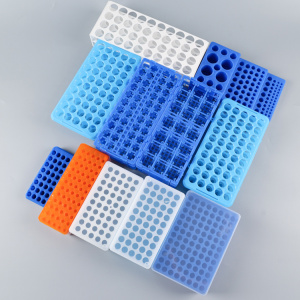Analysis of the phenomenon of "small black dots" during cell culture dish experiments
Cell culture dish is suitable for medium-sized culture of cells and tissues, and can also be used as temporary and storage containers in a variety of experiments such as weighing, separating and processing tissues or cells. Before use to be cleaned and disinfected, culture dishes clean or not have a greater impact on the work, can affect the pH of the culture medium, if there is the presence of certain chemicals, will inhibit bacterial growth.

Newly purchased cell dish should be rinsed with hot water, then placed in a solution of 1% or 2% mass fraction of hydrochloric acid soaked for several hours, so that the free alkaline material removed, and then rinsed with distilled water two times.
Cell culture often sees some unknown "black spots" of different sizes and shapes in the cells and culture medium. Cell culture due to cell metabolism, material exchange, changes in the surrounding environment, especially in the process of observation from the 37 ℃ incubator, due to the greater specific heat of the liquid medium, the liquid temperature is higher than the external temperature, resulting in heat and cold exchange, the formation of a small range of liquid flow intensified, of course, these small fragments will be stirred up to form a seemingly "swimming "As cell culture continues, some cells begin to decay, the cell membrane structure breaks down, and the ruptured cell contents leak into the culture fluid. In particular, the destruction of lysosomes continuously causes damage to other cells and organelles, and if the fluid is not changed very diligently, further damage and residue will occur. The problem of "black spots" is a problem that has been identified by many cell culture operators, but so far no reagents and means have been found to monitor and exclude it, first of all because the so-called "black spot" pathogens are simply difficult to collect and capture, which also proves from another side The problem of "black spots" is difficult to determine; besides, any kind of foreign microorganisms in the culture medium will have the reaction and performance of life activities, not simply the appearance of movement.If the movement of the "black spot" has reached a level that can be observed with a microscope, its nutrient metabolism and energy demand can be imagined. As a result, the influence consumption, acid-base content level, etc. in the culture solution should be significantly changed.
For example, rapid and large precipitation, rapid drop in pH, massive cell death, infestation by other types of microorganisms, etc. These conditions are very difficult to observe in the so-called "black spot" infection. At the same time, there seems to be no strong evidence that the appearance of "black spots" affects cell status. On the contrary, the number of "black spots" increased significantly when the cell status decreased. It is likely to be cellular debris produced by cell death when the cell state declines. Therefore, it is more likely and reasonable that the "black dots" belong to cellular debris.
——



